The stark concrete walls-ready to shut at a moment’s notice-loom in the distance. Beyond the flood gates lies a desolate landscape. Buildings tower 20-feet above the ground. Fragments of long-abandoned boats litter the treetops. This is Yscloskey, a quaint fishing village outside of New Orleans fifteen years after Hurricane Katrina, and one of the stops on the Beyond the Flood Walls tour hosted by the American Queen Steamboat Company.
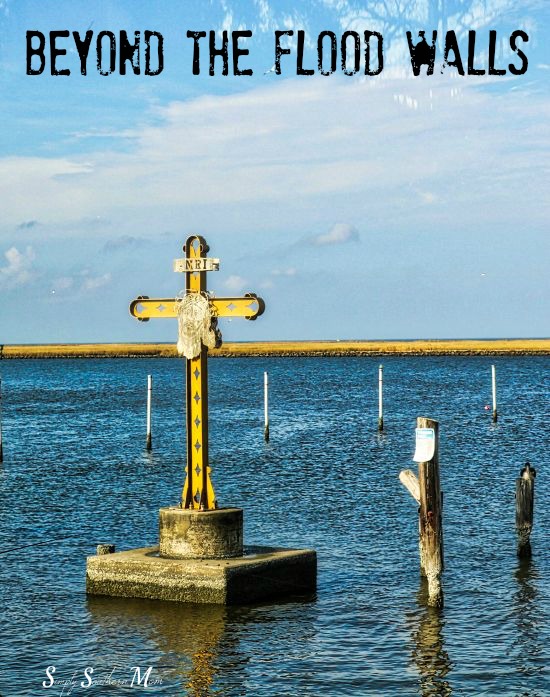
I was hosted by the American Queen Steamboat Company, but all opinions are my own.
This tour, created by Barbara Johnson, owner of the ecofriendly Great Delta Tours, delves beyond the glitz and glamour of New Orleans to explain how “Louisiana’s Mississippi River delta has delicately woven a rich and distinctive tapestry of the natural environment, cultures, and economic engines for the region and the country.” In other words, you’ll learn the fascinating history behind the Mississippi River’s impact on New Orleans and find sites many tourists never discover.
Beyond The Flood Walls Tour
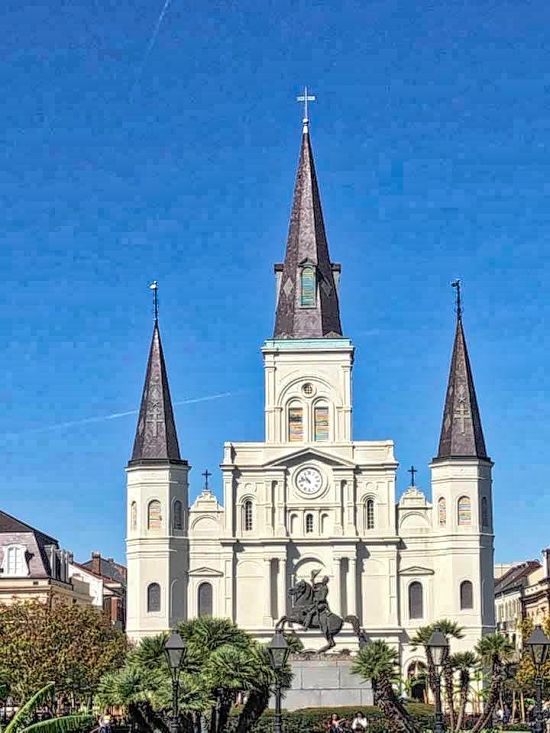
St. Louis Cathedral, the oldest continuously operating church in the US, presides over Jackson Square.
A Little French Quarter History
No tour of New Orleans is complete without a short homage to The French Quarter. Established by the French as the capital of Louisiana in 1718, the land was located along the edge of a swamp. At 14 feet above sea level, this was the highest ground in the area. Iconic Jackson Square, the showcase of the quarter, is designed after the Place Devage in Paris, France. Here you’ll find St. Louis Cathedral, the Cabildo, the Presbytere museum, and Cafe Du Monde.
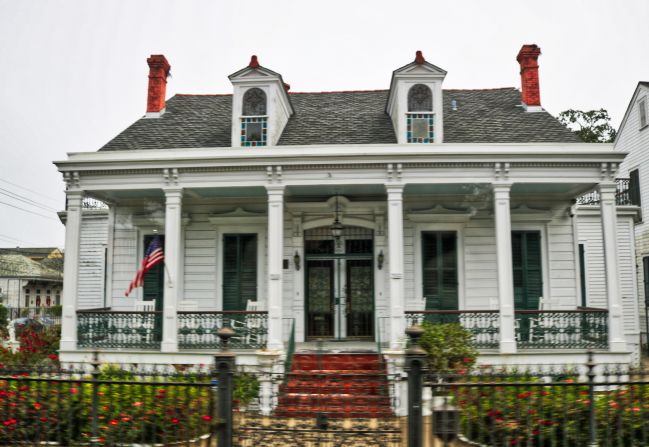
A Creole Style Home
What’s That Style?
New Orleans is a fascinating mix of cultures. From the earliest Native American settlers, the land has passed through the hands of the French, the Spanish, and the US. Refugees, such as the Acadians from British Columbia,(later known as “Cajuns”), fled to the city in its early years. This diversity created a blend of architectural styles. The Spanish influence-with its graceful wrought-iron balconies-in the French Quarter sits beside Shotgun houses, Creole cottages, and American townhouses.
After the invention of a pump by A. Baldwin Wood allowing the swamp to be drained, the city expanded to include the Marnee neighborhood, New Orlean’s first subdivision. The Creole cottage, a common style in the Marnee neighborhood, has a roofline parallel to the street, four openings in the front -two windows and two doors- and dormer windows.
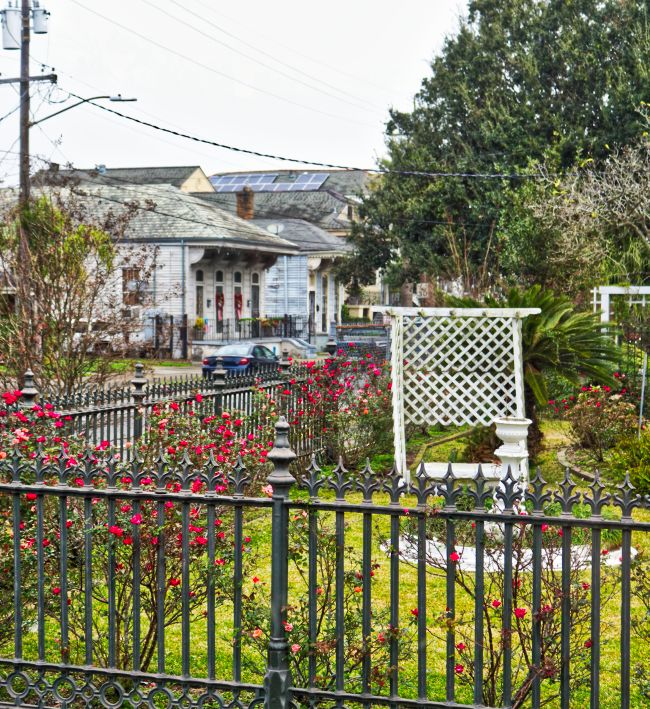
Many people around New Orleans are adding gardens and green spaces to their property to help absorb water.
The Lower 9th Ward and The Gentilly Neighborhood
This section of New Orleans was the hardest hit during Hurricane Katrina. Another section, the Gentilly Neighborhood, usually considered the “Upper 9th Ward”, suffered almost as much damage. When two areas of the London Canal were breached, a 20-foot wall of water swept through the ward, enveloping everything in its path within a matter of minutes. Today, abandoned lots and homes, their windows and doors boarded shut, dot the landscape. Ghostly white concrete slabs mark where foundations and driveways once stood.
The Levee Exhibit Hall and Flooded House Museum, located at 500 Warrington Drive, offers a testament to the devastation caused by Katrina.
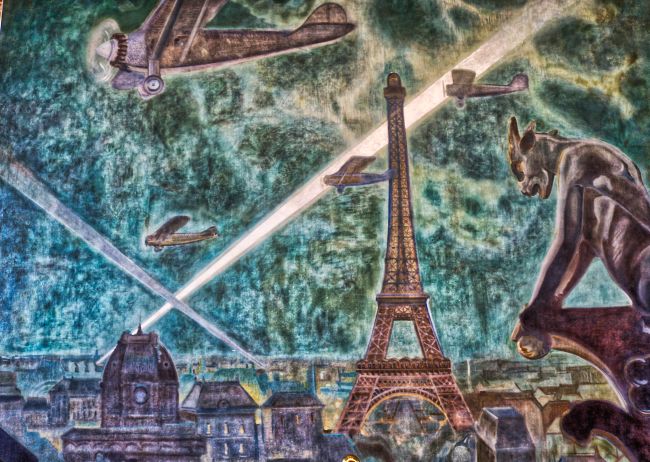
One of the murals found in the Lakefront Airport.
Lakefront Airport
Situated on the banks of Lake Pontchartrain, the Lakefront Airport opened in 1934. Once known as “the air hub of the Americas,” the airport is now a homage to the Art Deco movement. A major renovation in the 1960s caused much of the details to be lost forever, but the airport has been restored to its former glory. Murals by Xavier Gonzalez grace the second floor. A twelve-point compass beckons visitors to chart locations of destinations around the world. The Fountain of the Four Winds, created by renowned sculptor Enrique Alférez, stands as a sentinel outside the airport.
The sculpture of four nude women enraged some New Orleans citizens so badly that Alferez was afraid his work would be destroyed. He positioned himself-with shotgun in hand- in front of the sculpture each night. His creation was saved when Eleanor Roosevelt stepped in and decreed nothing about the sculpture would be changed.
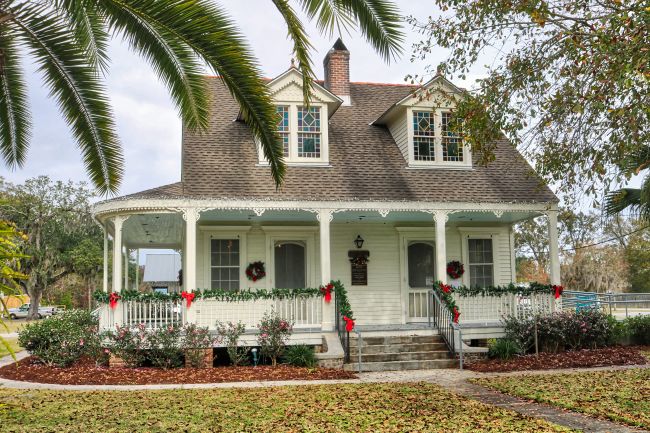
The Los Islenos History Museum
Los Islenos Museum and Village
A group largely forgotten in the colonization of Louisiana is the Islenos. These settlers arrived from the Canary Islands between 1778 and 1783 in an attempt to stop British expansion efforts. The Los Islenos Village is located in St. Bernard’s Parish and consists of nine buildings on 22-acres. Here you’ll meet curators and docents, descended from the original Islenos settlers, who proudly share their heritage.
After a stop in the Durcos museum with its changing seasonal exhibits, guests will tour the Esteves House, and stop by the main hall for a traditional Islenos meal. We feasted on Caldo, a thick, rich soup, paella, green beans, salad, and bread pudding.
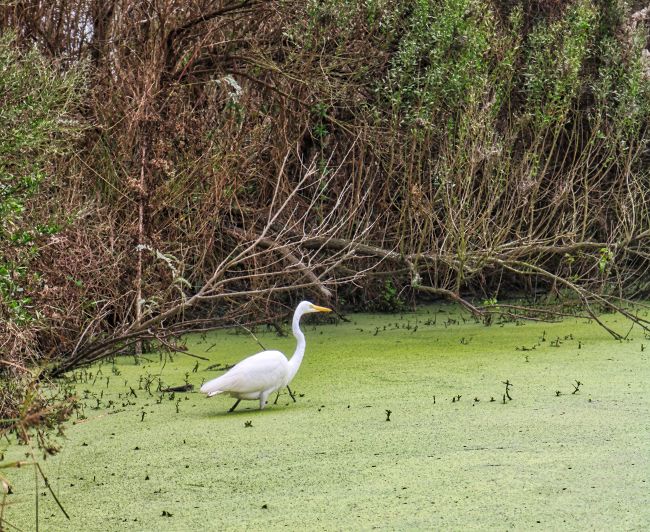
This heron takes a stroll through the Bayou Sauvage.
Bayou Sauvage
Think it’s impossible to see wildlife in the city? Think again. Bayou Sauvage, the largest urban wildlife refuge in the US, is located fifteen minutes from the French Quarter. Encompassing 23,000 acres, it’s a collection of freshwater and brackish marshes. White-tailed deer, squirrels, and nutria are common sights among the marshes. In the warmer months, you might spot alligators and turtles or hear the croak of bullfrogs. An important stop along the Mississippi Flyway, the bayou is home to 340 species of birds throughout the year.
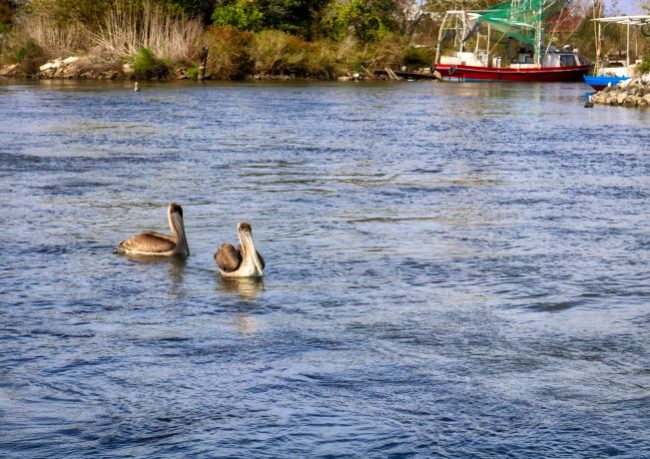
Pelicans rest on the water in Yscloskey.
Yscloskey
This sleepy village is the home to Don Robin, a fourth-generation producer of oysters, crawfish, blue crab, and shrimp. Mr. Robin grows oysters (or “spat” as baby oysters are known) by a process called seeding. Spat are sprinkled onto beds and tended for up to five years before harvest. At the mercy of the tides, floodwaters, and poachers, Mr. Robin admits two things have helped rebuild his business since it was destroyed in Katrina.
He’s found a market for the piles of cement rubble left from abandoned and destroyed homes. It can be crushed and used to seed beds. The spat sticks more readily to these beds and increases production. Through this technique, he can grow oysters in two years instead of the normal five. Another is the rise in the popularity of grilled oysters. The samples of these cheesy, breaded oysters he serves are sure to put a smile on your face.
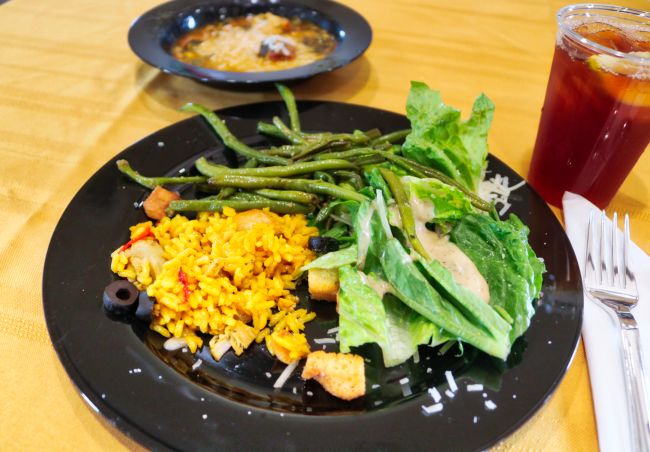
A traditional Islenos meal.
These are only a few tidbits you’ll learn on the Beyond the Flood Walls tour. Along the way, you’ll discover City Park, how the invention of pumps, canals, and levees caused the growth of the city, learn the resilient nature of the diverse blend of cultures and people who call New Orleans home, and more.
Tips to Know Before You Go:
*The Beyond the Floodwalls Tour is offered as a premium excursion-at an additional fee-for American Queen Steamboat Guests.
*This trip has an activity level of 3, but there’s not much walking. It’s mostly short distances, although there are a few minutes to explore the New Orleans Lakefront Airport, the Islenos village, the Bayou Sauvage, and the dock at Yscloskey.
*The tour begins at 9 am. Guests meet at 8:45 am and are picked up from the hotel. Drop off time at the boat docks is around 3:30 pm. Lunch is provided.
*If you’d prefer a short tour, try the New Orleans Highlights Tour. This 5 1/2 hour tour showcases some of the historic hotspots in New Orleans; Jackson Square, City Park, St. Charles Avenue, the Garden District, and St. Louis Cemetery.
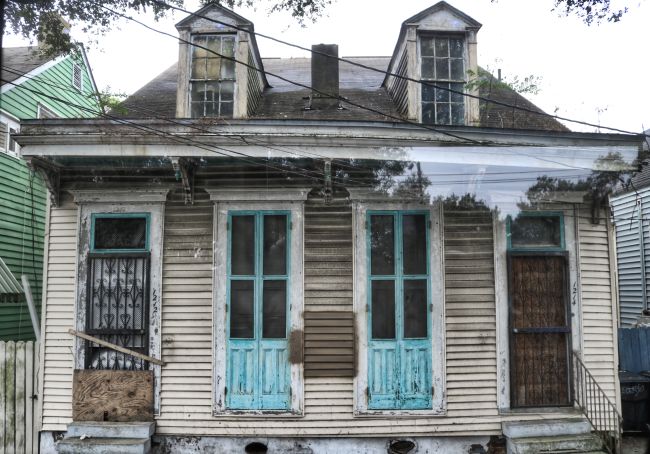
Almost 15 years post-Katrina, several New Orleans neighborhoods still struggle to recover.
Have you sailed on the American Queen or the American Duchess on one of their lower Mississippi River cruises? I’d love to hear about your experiences.



Pingback: How To Spend A Day in Vicksburg, Mississippi - Simply Southern Mom
Pingback: How to Spend a Day in Natchez, Mississippi - Simply Southern Mom
Pingback: The American Queen Steamboat Cruise - Simply Southern Mom
I have always wanted to visit New Orleans! So much history and I also love the food 😉
One I have not been ia New Orleans. I so want to go. There is so much history, it is a must on my list!
wow, what a fun tour! I would love to do this next time we visit New Orleans. So sad to see some houses are struggling to go back to where it was. Thanks for sharing!
These photos are all so beautiful. What great places to be able to see. I love to explore places like these when I’m out too. Love it!
That looks like a fun time. I would love to see that area in person sometime. We just have yet to plan that trip but someday I know we will get out there.
That looks like a fun tour. I’ve never been on a cruise. I’d love to experience it one day. And I’ve never been to New Orleans too. One day, I hope.
New Orleans has a unique and diverse culture. Pretty much ideal to live there when you like peace of mind. Love the interior and the people as well.
Wow! That tour sounds really fun and exciting! I will definitely visit New Orleans again. And would want to participate in this tour.
I would love to take that tour! I went to New Orleans in 2008, and it was such an interesting place. We were able to help a little with the kids in the 9th Ward with a photography project. It was a wonderful experience for the volunteers and the kids seem to enjoy it too.
I love New Orleans and could live there easily but the weather is just something I couldn’t do. Everything you listed here is a reason I would love going there!
This was fascinating! I’ve been to New Orleans a couple of times but learn more in this blog post than I did on both trips combined. Thank you so much.
My dad went to New Orleans a year ago. He came back with so many pictures and stories about the area!
There is so much beauty and sadness in the history of New Orleans, which both add to the appeal. We would love to take the kids there someday so they can learn about the good and the bad history.
I’ve always wanted to go to New Orleans. It’s such a gorgeous spot. I love your photos. I hope I can make it there one day.
I’ve never been to New Orleans before. This looks like a really amazing experience. I would love to give this a try.
I’ve never been to New Orleans before but this is so awesome. I definitely would love to go visit.
New Orleans has so much to offer and to see. It was so sad when Katrina hit but it looks like they are recovering. I have to go back and see those places.